Welcome to a world of enchanting outdoor landscapes lighted by carefully designed landscape flood lighting. Whether you have a spacious backyard, a comfy garden, or a sprawling estate, the right floodlights can transform your outdoor spaces into captivating and secure havens.
Landscape flood lighting isn’t just about illumination; it’s about crafting a magical atmosphere that displays your property’s finest features. With carefully positioned floodlights, you can highlight stunning trees, elegant pathways, and charming water features, while enhancing your property’s visual appeal. These floodlights not only make your outdoors inviting during evenings but also provide an additional layer of security.
In this guide, we’ll delve into the intricacies of outdoor flood lighting, from its importance and selection to installation and optimization. By the end, you’ll be able to create a captivating exterior environment while increasing safety and visibility.
Landscape Flood Lighting Definition. What is Landscape Flood Lighting
Landscape flood lighting is the deliberate use of sturdy, broad-spectrum lights within the outdoor environment after sunset to illuminate broad regions or highlight certain architectural and natural aspects. Outdoor flood lighting is an incredibly effective method for changing the gloomy canvas of gardens, paths, and architectural facades into impressive visual spectacles.
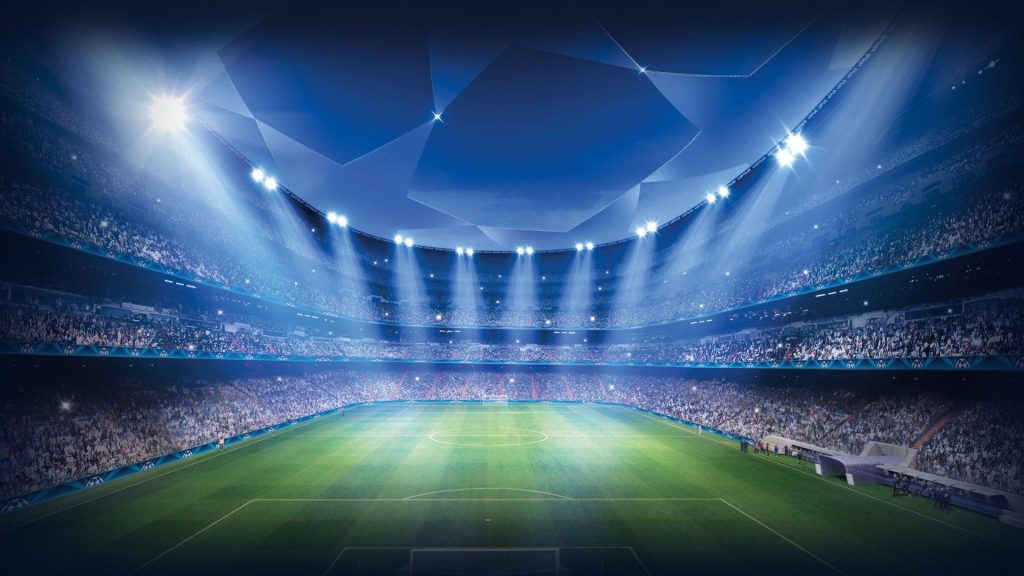
The Importance of Outdoor Landscape Flood Lighting
Outdoor spaces should be enjoyed beyond the boundaries of daylight. Landscape flood lighting extends the usability of gardens, patios, decks, and other areas well into the night. Imagine savoring a romantic dinner under the stars, hosting gatherings that continue late into the evening, or unwinding with a book in the gentle glow of outdoor lights. Floodlighting transcends time constraints, creating a welcoming atmosphere that beckons you to embrace the outdoors no matter the hour.
Outdoor landscape flood lighting is essential not just for its aesthetics but also for its sustainability in today’s environmentally conscious world. LED flood lights, which are commonly used for this purpose, use substantially less energy than traditional lighting solutions. This energy efficiency lowers your carbon footprint while still providing long-lasting performance, making outdoor lighting a wise investment for the environment and your wallet.
Landscape Flood Lighting Advantages and Disadvantages
Landscape flood lighting represents a double-edged sword, with benefits and drawbacks that must be carefully considered in the context of your outdoor lighting goals. While flood lighting has the power to elevate landscape aesthetics, bolster security, and extend outdoor activities, it also demands considerations regarding light pollution, energy consumption, and proper design implementation. By embracing the strengths and acknowledging the limitations, you can harness the potential of outdoor flood lighting to create an exterior environment that is both enchanting and functional, allowing your outdoor space to shine in all its illuminated glory.
Landscape Flood Lighting Advantages
Increased Security: One of the most prominent advantages of landscape flood lighting is its contribution to safety and security. By eliminating dark corners and shadows, flood lights act as a deterrent to potential intruders. Incorporating motion sensors improves security by activating lights when motion is detected, effectively alarming and discouraging unwanted guests.
Functional Outdoor Utilization: Flood lighting extends the usability of outdoor spaces well beyond sunset. Whether you’re hosting an evening gathering, enjoying a quiet moment on your patio, or navigating pathways, the illumination provided by flood lights ensures convenience and comfort, no matter the time of day.
Enhanced Aesthetics and Ambiance: Landscape flood lighting can transform a dull outdoor environment into an enthralling visual extravaganza. Flood lights add depth, texture, and complexity to the landscape by correctly lighting trees, plants, sculptures, and architectural features. This improved aesthetic allure creates an inviting ambiance, tempting you and your visitors to remain in the night’s embrace.
Architectural Emphasis: Landscape flood lighting makes it easy to highlight the architectural details of your home or outbuildings. These lights accentuate the unique elements of your property’s design, from ornate columns to intricate facades, effectively adding a touch of shine and sophistication to your environment.
Versatility in Design: Landscape flood lighting offers a broad range of lighting techniques, from spotlights to wall washers, allowing you to tailor your design to your specific preferences. Whether you opt for dramatic focal points or subtle ambient lighting, the versatility of floodlights ensures a customizable solution that aligns with your outdoor vision.
Landscape Flood Lighting Disadvantages
Light Pollution: One of the drawbacks associated with flood lighting is the potential for light pollution. Poorly designed or excessively bright lighting can contribute to skyglow, obstructing the view of stars and negatively impacting the natural environment. To mitigate this, it’s crucial to carefully plan and position your flood lights to minimize light spill and glare.
High Initial Cost: Investing in quality flood lighting fixtures, especially those equipped with advanced features like motion sensors or color temperature adjustment, can result in a higher upfront cost. Therefore, it is critical to consider this as a long-term investment that improves both the beauty and utility of your outdoor space.
Energy Consumption: Landscape flood lighting can use a lot of electricity, especially if you use classic incandescent lights. This affects not only your electricity bills but also your carbon footprint. This issue, however, can be solved by utilizing energy-efficient LED floodlights that provide both brightness and longevity.
Glare and Discomfort: Improperly positioned flood lights can lead to glare, which not only diminishes the visual appeal of your landscape but can also be uncomfortable for those exposed to the light. Careful consideration of the placement and angle of your flood lights can help reduce glare and ensure a pleasant outdoor experience.
Maintenance and Upkeep: Outdoor elements such as weather conditions, dust, and debris can impact the performance of your flood lights over time. Regular maintenance, including cleaning and occasional bulb replacement, is necessary to ensure consistent illumination and extend the lifespan of the fixtures.
Types of Landscape Flood Lighting
Landscape flood lighting emerges as a flexible tool in outdoor aesthetics, generating engaging visual experiences that transform the night into a canvas of enchantment. A symphony of lighting approaches works together to bring various aspects of your outdoor space to life. We delve into the exciting world of outdoor flood lighting in this guide, studying its numerous varieties, including landscape flood ambient lighting, landscape flood task lighting, landscape flood accent lighting, and landscape flood decorative lighting.
Landscape Flood Ambient Lighting
The skill of providing soothing and welcoming lighting that surrounds your outside space in a soft glow is known as landscape flood ambient lighting. In contrast to harsh overhead lighting, flood ambient lighting creates a sensation of warmth, enabling you to enjoy the beauty of your surroundings even after sunset. Outdoor flood ambient lighting provides a comforting and appealing setting for outside parties, encouraging private chats and starlit moments.
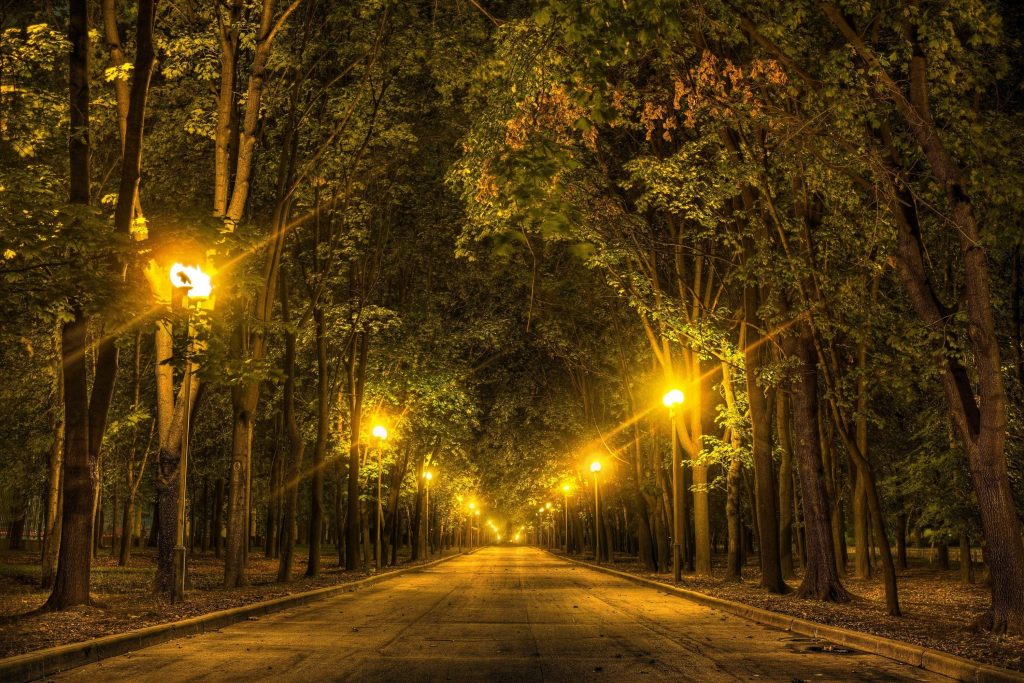
Ambient flood lighting in the landscape produces a pleasant and inviting environment, making exterior spaces feel like extensions of your home. Soft, diffused lighting contributes to a relaxing ambiance, ideal for resting after a hard day. While it does not provide high-intensity illumination, ambient lighting can help you navigate your outdoor space safely.
Landscape Flood Task Lighting
The purpose of landscape flood task lighting is to illuminate certain functional parts of your outdoor space. This type of lighting ensures that vital chores may be completed flawlessly, even after sunset, whether it’s the cooking area of your outdoor kitchen, a gardening station, or a desk on your deck.
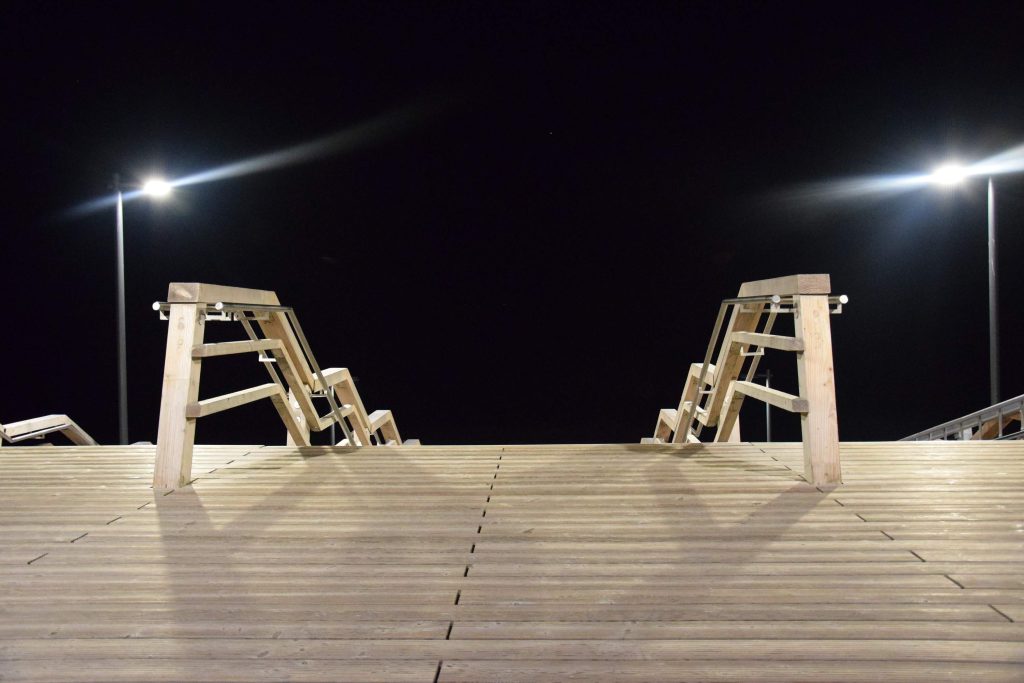
Late at night, flood task lighting allows you to utilize your outdoor spaces for practical purposes. Outdoor flood task lighting illuminates activities such as cooking, reading, and gardening. By adjusting the intensity of the light, you can create an acceptable working environment for different performances.
Landscape Flood Accent Lighting
The art of accentuating distinctive elements of your outdoor space is known as landscape flood accent lighting. From magnificent trees to intriguing sculptures, this approach draws attention to desired features by using focused beams of light to create engaging visual focal points.
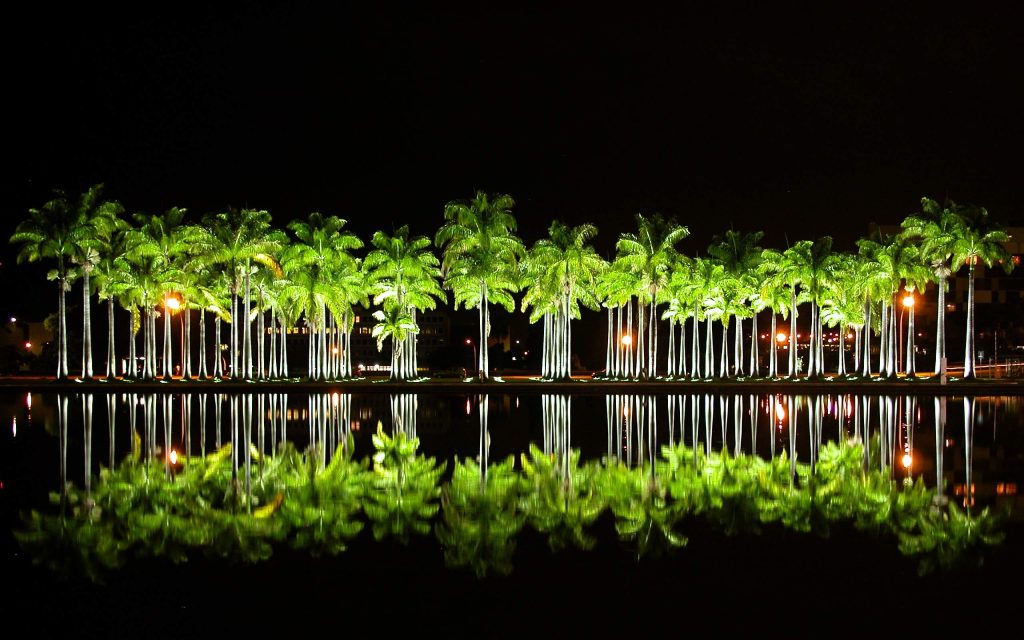
You can highlight the distinctive characteristics of your property’s design by spotlighting architectural details. Outdoor flood accent lighting provides depth and character to commonplace objects, transforming them into visual masterpieces. You can direct the eyes of the viewer, encouraging them to enjoy the tiny details of your landscape.
Landscape Flood Decorative Lighting
Landscape flood decorative lighting elevates illumination to an art form by including light fixtures that are both functional and visually appealing. These fixtures are frequently used as decorative features during the day and as sources of enchantment at night.
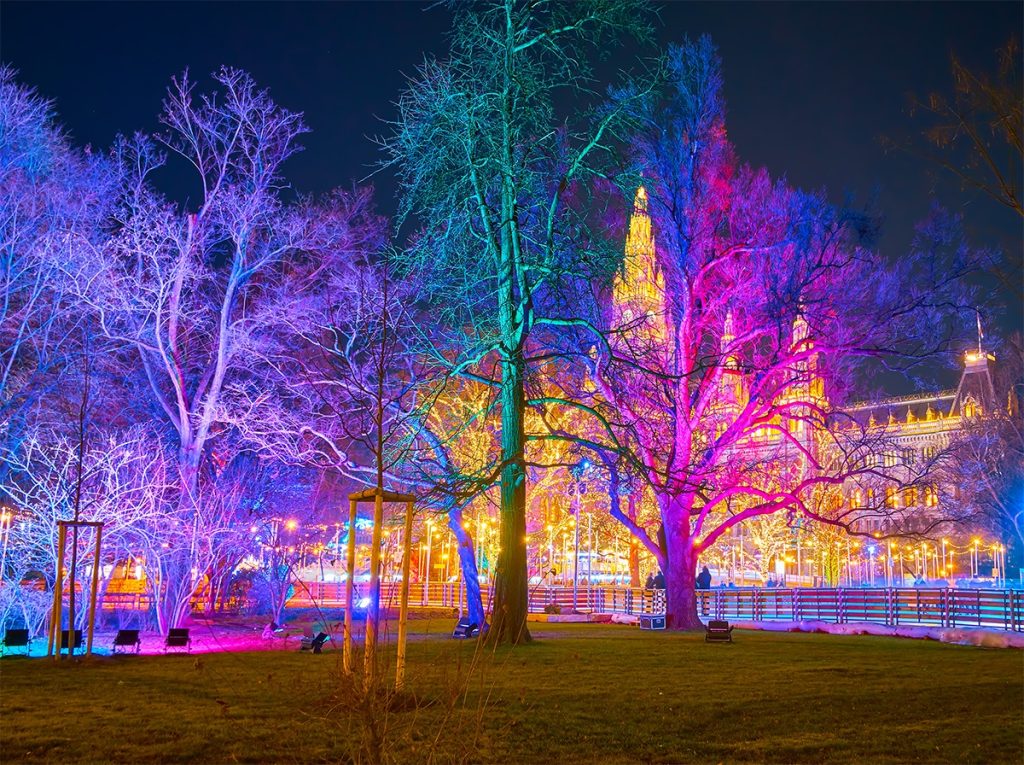
Outdoor decorative lighting fixtures provide an artistic touch to your outside space, transforming it into a decorative piece in and of itself. You can choose fittings that complement your selected style, boosting your landscape’s overall visual motif. These fixtures transform into intricate sculptures after sunset, delivering a one-of-a-kind and unique visual experience.
Types of Outdoor Flood-Lighting Fixtures
Outdoor flood lighting fixtures are the artisans of lighting in the arena of exterior aesthetics, where the interplay of light and shadow generates engaging visual storytelling. These fixtures are available in different styles, each with unique features that cater to distinct lighting requirements and tastes. We delve into the world of outdoor flood lighting fixtures in this guide, examining the features and benefits of outdoor LED flood lights, outdoor halogen flood lights, and outdoor solar-powered flood lights.
Outdoor LED Flood Lights
Outdoor LED floodlights are the top of efficiency and brilliance in the realm of outdoor lighting. These fixtures use Light Emitting Diodes (LEDs) as the light source and have a lot of benefits that make them a popular choice among homeowners.
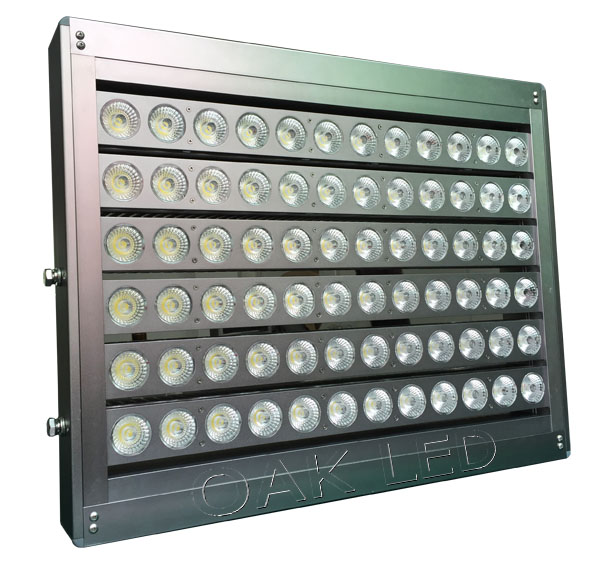
LED flood lights are noted for their remarkable energy efficiency, utilizing substantially less electricity than traditional lighting solutions. LEDs have a longer lifespan and require less frequent replacement, lowering maintenance expenses.
LED flood lights provide swift, full brightness when turned on, making them perfect for security. LEDs can be programmed to emit various colors, allowing for unique lighting effects or mood-setting surroundings. LED floodlights have a higher initial cost than alternative solutions. However, the long-term savings in energy and maintenance costs frequently outweigh the original expenditure.
Outdoor Halogen Flood Lights
Outdoor halogen flood lights are synonymous with high-intensity lighting and adaptability. These lights, which use halogen lamps to cast powerful beams of light, are suited for many outdoor applications. Halogen flood lights produce brilliant, concentrated light that is perfect for lighting large outdoor spaces.
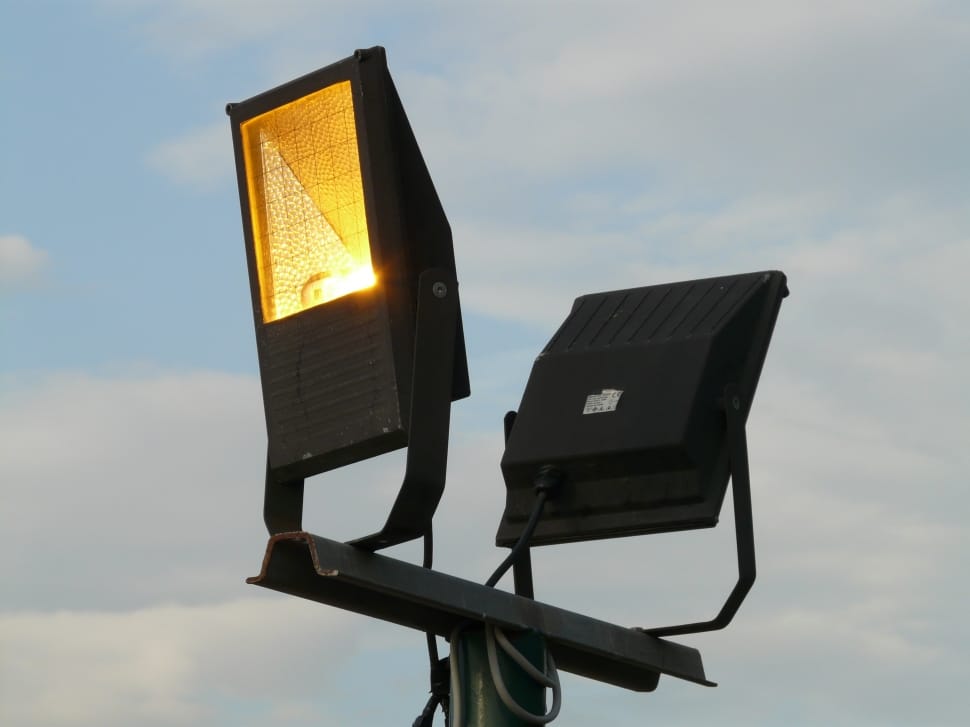
Because halogen lamps have a high Color Rendering Index (CRI), they portray colors correctly and brightly. Halogen flood lights give fast lighting and require no warm-up time. Many halogen flood lights are dimmer switch compatible, allowing you to alter the brightness to your preference.
Halogen flood lights are less energy efficient than LED flood lights, resulting in higher electricity costs over time. Also, halogen bulbs have a shorter lifespan than LEDs, necessitating more frequent replacements and maintenance.
Outdoor Solar-Powered Flood Lights
Outdoor solar-powered flood lights harness the power of the sun to give lighting at night. These fixtures are outfitted with solar panels that absorb sunlight and turn it into energy that can be stored in rechargeable batteries. Solar-powered flood lights use sustainable energy, lowering your carbon footprint and energy costs.
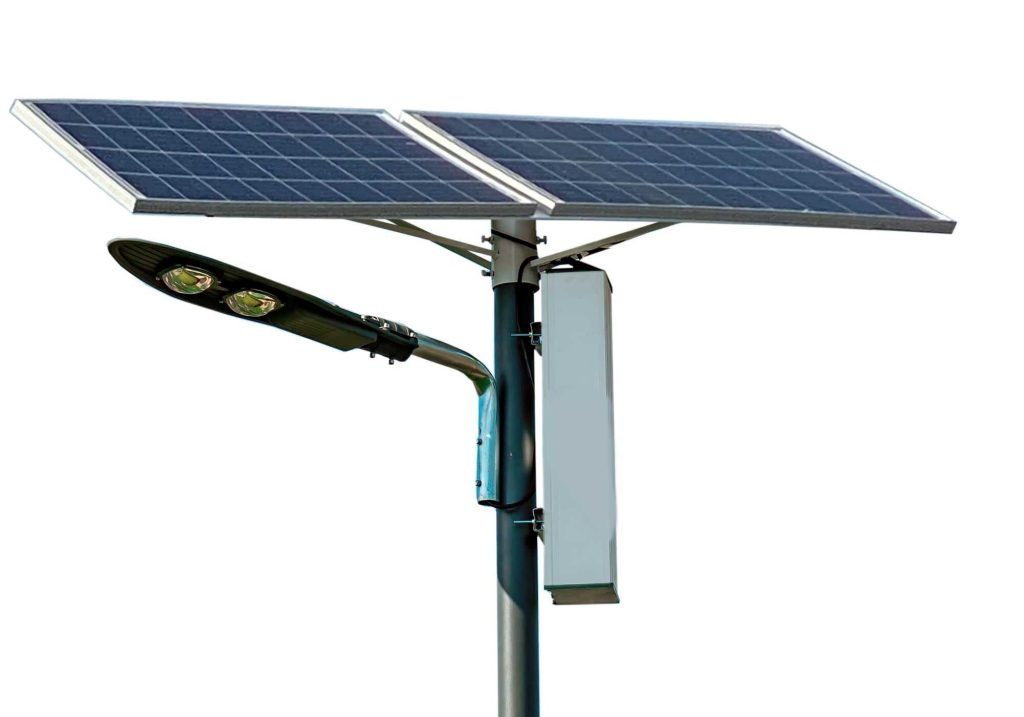
Solar-powered lights are simple to install because they do not require cabling or an external power source. These lights often have light sensors that turn them on at night and off in the morning. Solar-powered flood lights require less maintenance because they are self-sufficient.
The amount of sunshine received by solar-powered floodlights determines their performance. They may perform worse on cloudy days or in dimmed regions. Solar-powered flood lights may have a higher initial cost due to the technology needed but can provide long-term energy savings.
Guide to Installing Outdoor Landscape Flood Lighting
As the sun sets and night descends, outdoor landscape flood lighting has the power to transform your outside space into an enchanting realm of beauty and functionality. Whether you want to highlight architectural features, enhance security, or create a captivating ambiance, the installation plays a pivotal role in achieving your lighting vision. In this guide, we’ll walk you through the step-by-step process of installing outdoor landscape flood lighting, from meticulous planning to fine-tuning the system.
Plan and Design
Planning and design are the foundation of a successful outdoor landscape flood lighting installation. Begin by envisioning the areas you want to illuminate and the lighting effects you wish to achieve. Consider focal points, pathways, and safety concerns. Draft a lighting plan that includes fixture placement, angles, and the lighting effect you want for each area.
Balance: Ensure a balance between functional and aesthetic lighting to create an inviting and safe environment.
Layers of Light: Incorporate multiple light layers, combining ambient, task, and accent lighting for a dynamic and visually pleasing result.
Zoning: Divide your outdoor space into zones based on lighting needs, allowing for customized lighting in different areas.
Gather Materials
Before diving into the installation, gather all the necessary materials, including outdoor flood lighting fixtures, wiring, transformer, wire connectors, wire strippers, screwdrivers, drill, and any additional tools specified by your chosen lighting system.
Quality Fixtures: Invest in high-quality fixtures designed to withstand outdoor conditions, ensuring durability and longevity.
Appropriate Wiring: Choose wiring suitable for outdoor use and capable of handling the voltage and load of your lighting system.
Install Fixtures
With a well-thought-out plan and the proper materials at hand, it’s time to install the fixtures. Begin by placing fixtures in their designated spots according to your lighting plan. Depending on the type of fixtures you’re using, you may need to secure them to the ground, a wall, or other surfaces.
Steady Placement: Ensure that fixtures are securely anchored to prevent movement due to wind or other factors.
Fixture Angles: Experiment with different angles to achieve the desired lighting effects without causing glare.
Connect Wiring and Transformer
Connecting the wiring and transformer is a crucial step in the installation process. Begin by burying the wiring at a depth of at least 6 inches to prevent accidental damage. Connect the wiring to the fixtures using appropriate wire connectors, ensuring a secure and weatherproof connection. Next, connect the wiring to the transformer, which converts the voltage from your home’s electrical system to the suitable voltage for outdoor lighting.
Waterproof Connections: Use waterproof wire connectors to protect the wiring from moisture and weather conditions.
Color Coding: If your wiring is color-coded, follow the manufacturer’s instructions to ensure proper connections.
Test the System
Before you complete installation, test the lighting system to confirm that everything works as it should. Turn on the lights and inspect each fixture for proper lighting, making any necessary changes. This phase allows you to discover any problems and make any necessary changes before proceeding with the installation.
Bulb Alignment: Check that bulbs are properly aligned and seated in the fixtures to achieve the desired lighting effects.
Dimming and Switching: If your system supports dimming or different lighting zones, test these features during this phase.
Fine-Tuning
The final step in installing outdoor landscape flood lighting involves fine-tuning the system to achieve the desired effects. Make any necessary adjustments to fixture angles, positioning, and brightness levels based on your observations during the testing phase.
Observation: Examine the lighting effects from various angles to discover areas that may require further correction.
Time of Day: Test the system at different times of the day to ensure the lighting effects are consistent and optimal.
Landscape Flood-Lighting Outdoor Best Practices
You may create breathtaking panoramas that increase the beauty and usability of your surroundings by expertly illuminating outdoor locations. To fully realize the potential of landscape flood-lighting, one must navigate the world of design ideas and avoid typical blunders. We delve into the world of landscape flood-lighting outdoor best practices, uncovering creative design concepts and providing techniques to avoid common problems.
Design Ideas for Landscape Flood-Lighting
Landscape flood-lighting serves as an artist’s brush, meticulously painting enchanting scenes that elevate the beauty and allure of your surroundings. By thoughtfully lighting various elements of your outdoor space you can create captivating visual narratives that transform the night into a canvas of wonder. In this guide, we explore imaginative design ideas for outdoor flood-lighting, unlocking the potential to weave light into the very fabric of nature.
Gardens and Flowerbeds Flood-Lighting
Uplighting Trees and Shrubs: Position flood-lights at the base of trees and shrubs to cast gentle, upward beams of light. This method creates intriguing shadows and showcases the intricate textures of leaves and branches.
Silhouetting Plants: Place flood-lights behind tall plants or flowers to create stunning silhouettes against walls or fences. The contrast between light and darkness adds depth to your garden’s nocturnal charm.
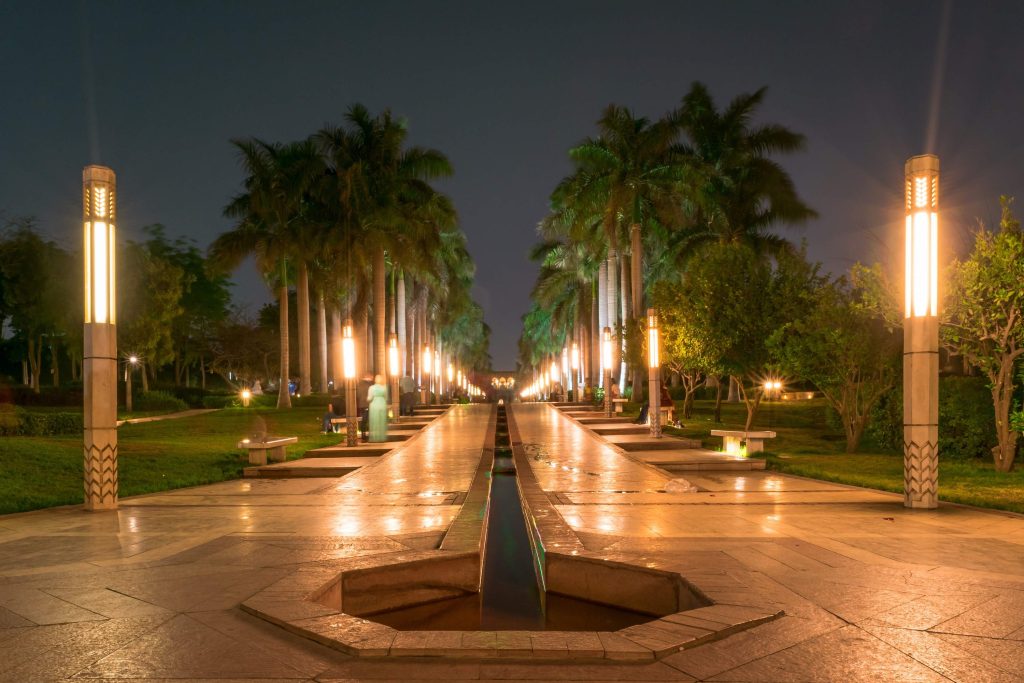
Flowerbed Wash: Use low-level flood-lights to wash over flowerbeds, accentuating vibrant colors and textures of blooming flowers. This technique gives an ethereal quality to your garden’s flora.
Tiered Lighting: Employ different lighting levels to create depth within your garden. Combine ground-level lighting with elevated flood-lights to accentuate the layered arrangement of plants.
Pathways and Driveways Flood-Lighting
Stepping Stone Illumination: Embed low-level flood-lights within stepping stones or pavers to create a magical pathway that leads the way with a soft, inviting glow.
Pathway Borders: Line the edges of pathways and driveways with well-spaced flood-lights. This creates a subtle boundary that enhances safety while adding an elegant touch.
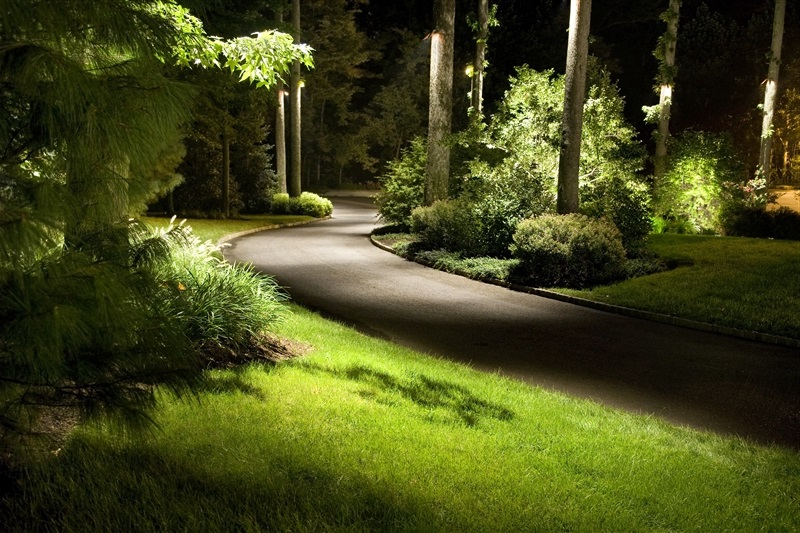
Overhead Canopy: Use overhead flood-lights to create a canopy effect along pathways. This approach casts a welcoming light that envelops you as you walk through your outdoor space.
Lunar Pathways: Mimic the soft illumination of moonlight by placing flood-lights strategically along pathways. The resulting play of light and shadows evokes a dreamy ambiance.
Outdoor Entertainment Areas Flood-Lighting
Pergola Elegance: Hang string lights or wrap fairy lights around the beams of a pergola. This creates an inviting and intimate atmosphere that’s perfect for gatherings.
Al Fresco Dining: Install pendant-style flood-lights above outdoor dining tables. These lights provide ample illumination for meals while adding a touch of elegance to the setting.
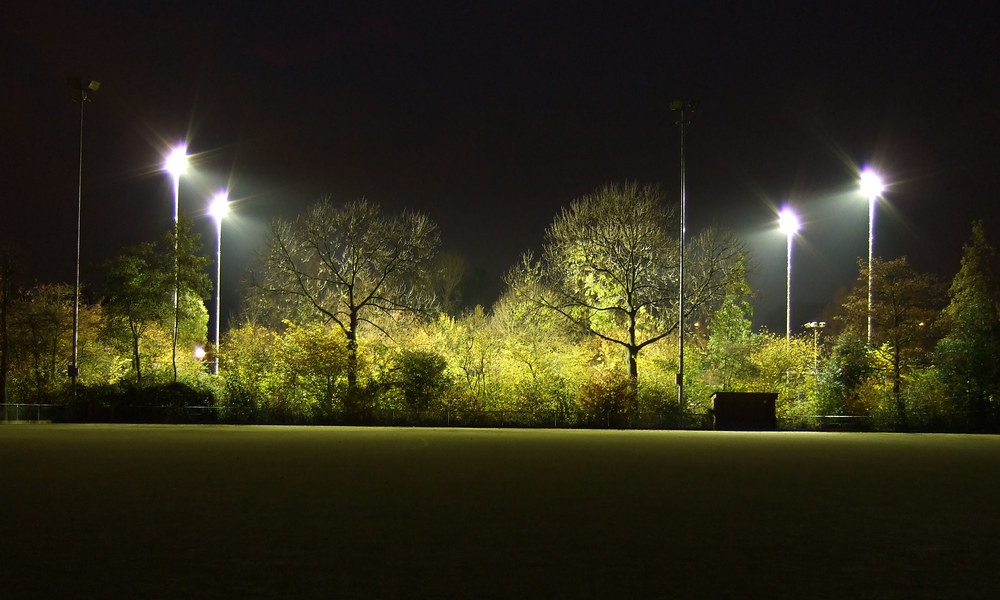
Fire Pit Focal Point: Illuminate fire pits or fireplaces with well-placed flood-lights. This creates a warm and cozy gathering spot where stories are shared under the starry sky.
Multicolor Accents: Opt for flood-lights with color-changing capabilities to infuse a playful and dynamic atmosphere into your entertainment area, allowing you to adapt the mood to different occasions.
Water Feature Flood-Lighting
Underwater Magic: Submerge underwater flood-lights in ponds or fountains to cast a gentle and enchanting glow on the water’s surface. This creates mesmerizing ripples of light.
Cascading Light: Illuminate waterfalls or cascades with hidden flood-lights. The interplay of light and water adds drama and serenity to your outdoor space.
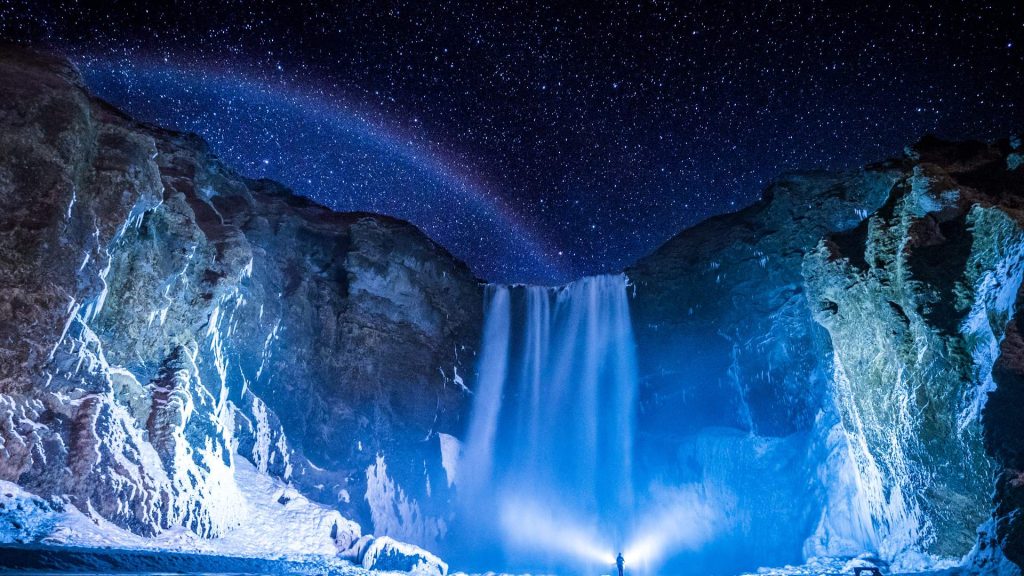
Floating Luminance: Place floating solar-powered flood-lights in large bodies of water. These lights create a magical effect as they gently drift across the surface, enhancing the overall ambiance.
Reflective Lighting: Position flood-lights to illuminate nearby surfaces that reflect on the water’s surface, such as walls or rocks. This creates a dynamic and ever-changing visual display.
Avoiding Common Mistakes in Landscape Flood-Lighting
Avoid flooding your outdoor space with excessive light, which can create a harsh and uninviting environment. Instead, focus on strategic illumination that highlights key features.
Improperly positioned flood-lights can cause glare, which is not only uncomfortable for viewers but can also diminish the overall aesthetic appeal. Opt for fixtures with glare shields or adjust angles to mitigate this issue.
Ensure that fixtures are well-maintained and free from debris. Dirty or damaged fixtures can obstruct light output and detract from the desired effects.
Aim to achieve balanced coverage throughout your outdoor space. Ensure that all areas, pathways, and focal points receive sufficient lighting.
While landscape flood-lighting enhances aesthetics, it’s important to consider energy efficiency. Opt for LED fixtures, timers, or motion sensors to minimize energy consumption.
Maintenance and Troubleshooting Tips
Cleaning Fixtures: Regularly clean your flood-light fixtures to remove dust, dirt, and debris that can obstruct the light output. Wipe down the lights with a gentle cloth or an effective cleaning solution.
Checking for Damage: Inspect fixtures for any signs of damage, such as cracks or corrosion. Replace damaged fixtures promptly to ensure optimal performance and prevent further issues.
Trimming Vegetation: Overgrown trees and plants can cast unwanted shadows and obstruct the light’s path. Trim foliage around flood-lights to maintain clear lighting.
Adjusting Angles: As plants grow or fixtures shift, the angles of your flood-lights may need adjustment. Regularly check and adjust the angles to ensure they continue to highlight desired features.
Bulb Replacement: Keep spare bulbs on hand and replace burnt-out bulbs promptly. Opt for LED bulbs for longevity and energy efficiency.
Testing Motion Sensors: If your flood-lights have motion sensors, test them regularly to ensure they activate as intended. Adjust the sensitivity settings if necessary.
Trends and Innovations in Landscape Flood-Lighting
Landscape flood-lighting is undergoing a revolution that combines creativity and sustainability, from energy-efficient LED outdoor flood-lighting to sustainable solar-powered solutions and the convenience of motion sensors. This article delves into the most recent trends and breakthroughs revealing the future of outdoor flood-lighting.
LED Outdoor Flood-Lighting
LED outdoor flood-lighting stands at the forefront of the lighting revolution, offering efficiency, longevity, and versatility like never before. Here’s how LEDs are transforming outdoor illumination:
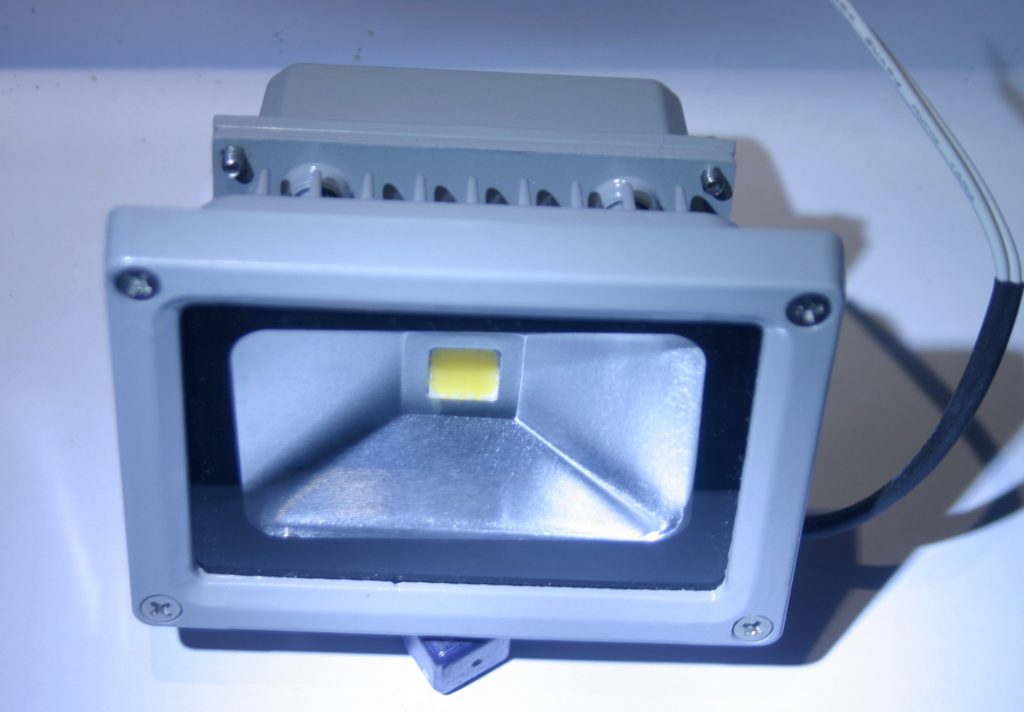
LED flood-lights use far less energy than traditional lighting solutions, resulting in lower electricity bills and a lower carbon footprint. LED lights have an incredibly long lifespan, frequently lasting 25,000 hours or more. This results in fewer replacements and lower maintenance expenses.
LEDs are available in a variety of color temperatures, allowing you to select the illumination hue that best complements your outdoor environment, ranging from warm to cold tones. Many LED flood-lights are compatible with smart home systems, allowing for remote lighting control and scheduling, which adds convenience and security.
Solar Outdoor Flood-Lighting
Solar outdoor flood-lighting taps into renewable energy sources to power outdoor illumination. This eco-friendly solution is gaining traction for its sustainability and ease of installation:
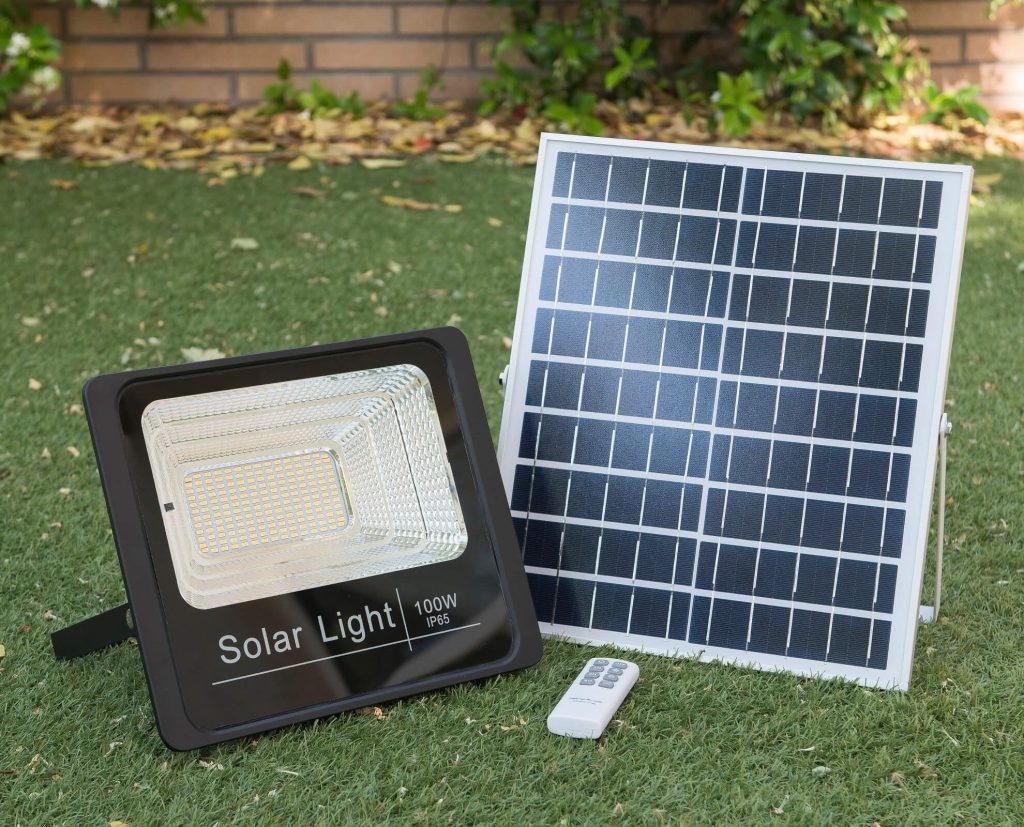
Solar flood-lights use the sun’s energy, eliminating the need for traditional power sources and lowering electricity expenses. Because solar flood-lights are wire-free, they are simple to install. Simply position the lights in bright spots to charge during the day, and they will turn on automatically at night.
Solar flood-lights are portable and can be placed anywhere they are needed. This adaptability is useful for lighting places without electrical outlets. Many solar flood-lights have built-in sensors that switch the lights on at nightfall and off at dawn, ensuring hassle-free operation.
Outdoor Flood-Lighting with Motion Sensor
Outdoor flood-lighting with motion sensors combines convenience, energy efficiency, and enhanced security in one package. This innovation is making outdoor lighting more responsive and dynamic:

Motion sensors detect movement and trigger the flood-lights to turn on automatically. This feature is ideal for lighting pathways, entrances, and other high-traffic areas. Because motion sensor flood-lights only activate when motion is detected, they conserve energy by not staying lit when not needed.
Motion sensor flood-lights deter potential intruders by illuminating dark areas when movement is detected, making your property less attractive to unwanted guests. Many motion sensor flood-lights allow you to adjust sensitivity levels, duration of illumination, and even the detection range, offering tailored lighting solutions.
Real-Life Outdoor Landscape Floodlighting Designs
Outdoor landscape floodlighting designs have an extraordinary potential for lighting the night, illuminating the hidden beauty of residences, trees, industrial places, and sports venues. The floodlighting design facilitates a universe of imagination that transforms outdoor settings into visual symphonies, from highlighting architectural details to creating a magical mood under the trees. Our imagined sceneries become reality as technology advances and design possibilities grow, adding a touch of magic and romance to the canvas of the night. The following real-life designs remind us that the interplay of light and shadow can create compelling and unique experiences.
Outdoor Flood Lights for House
Facade Wash: Install flood lights at an angle to wash the entire front façade of your house with light. This approach casts a warm and inviting glow that enhances visual appeal.
Column Highlights: Use narrower beam flood lights to focus on specific columns, statues, or intricate carvings, creating artistic focal points that become a visual treat at night.
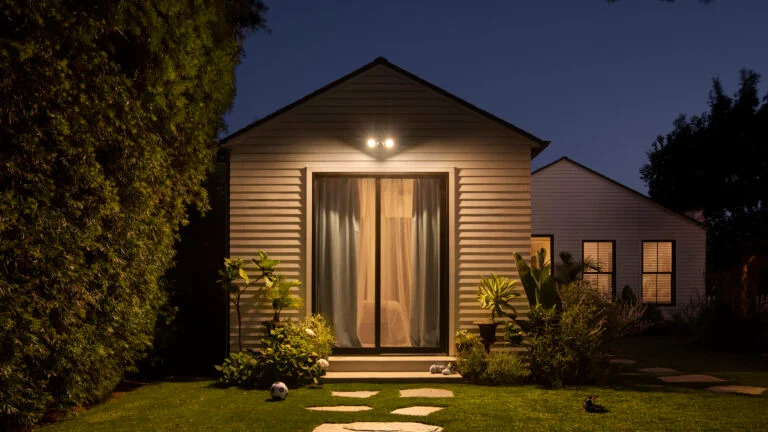
Grazing Effect: Place outdoor flood lights at the base of your house’s façade, directing the light upwards to create a dramatic grazing effect. This technique accentuates textures and architectural details, adding depth and charm.
Uplighting Features: Light the columns or pillars of your house with uplighting flood lights. This method imparts an elegant and regal quality that draws attention to these architectural elements.
Outdoor Flood Lights for Trees
Canopy Lighting: Light the canopy of trees from below to create a captivating overhead effect. This design adds a touch of enchantment as the light filters through leaves and branches.
Moonlighting: Position outdoor flood lights high in trees to mimic the gentle illumination of moonlight. This technique casts soft, dappled light that bathes your landscape in a mystical glow.
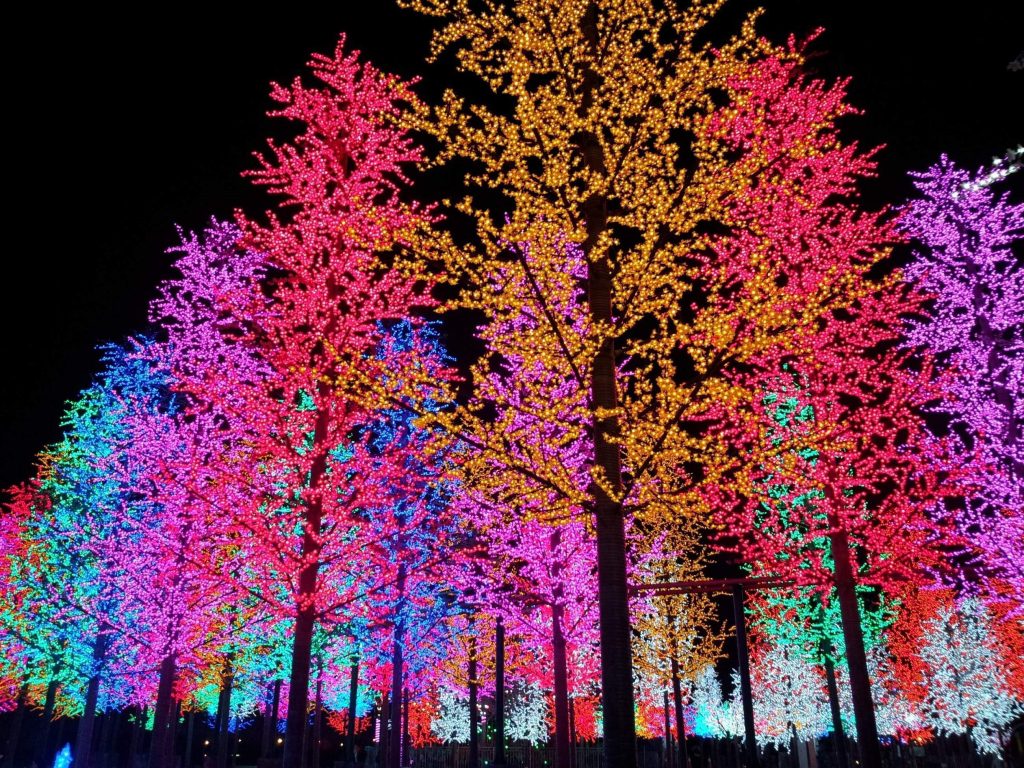
Multi-Trunk Lighting: For trees with multiple trunks, use well-spaced flood lights to create an enchanting play of light and shadow that highlights their unique shapes.
Pathway Guardians: Line pathways with trees on either side and illuminate them with flood lights, creating a magical tunnel of light that guides your way.
Industrial Flood Lights Outdoor
Industrial Accenting: Use industrial flood lights to draw attention to specific architectural aspects like loading docks or silos. This gives the industrial landscape aesthetic interest and character.
Outdoor Workspaces: Outdoor workstations should be lighted with focused flood lights to ensure safety and productivity during night shifts.
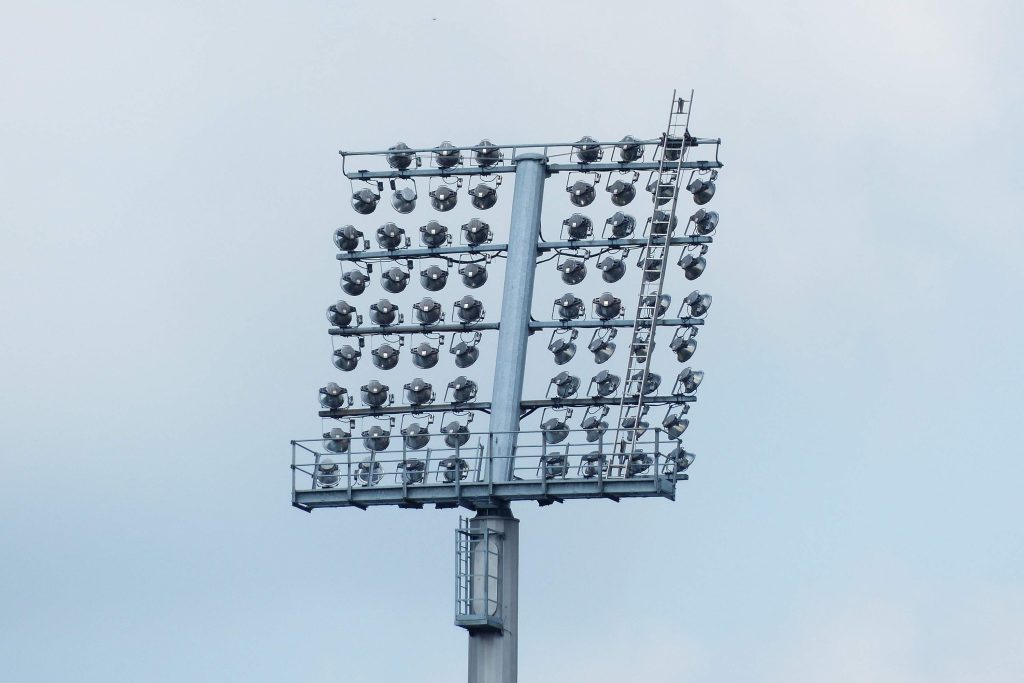
Pathway Safety: Floodlight paths throughout industrial environments create well-lit channels that avoid accidents and encourage movement.
Warehouse Lighting: Use powerful flood lights to illuminate the exteriors of warehouses and industrial buildings. This not only improves security but also adds a modern and industrial look.
Outdoor Flood Lights for Sports
Stadium Brilliance: Install flood lights in sports arenas to achieve consistent and uniform lighting that enhances visibility and showcases the action on the field.
Court Precision: Flood lights remove shadows and offer even lighting for precise gameplay on tennis courts, basketball courts, and other sports arenas.
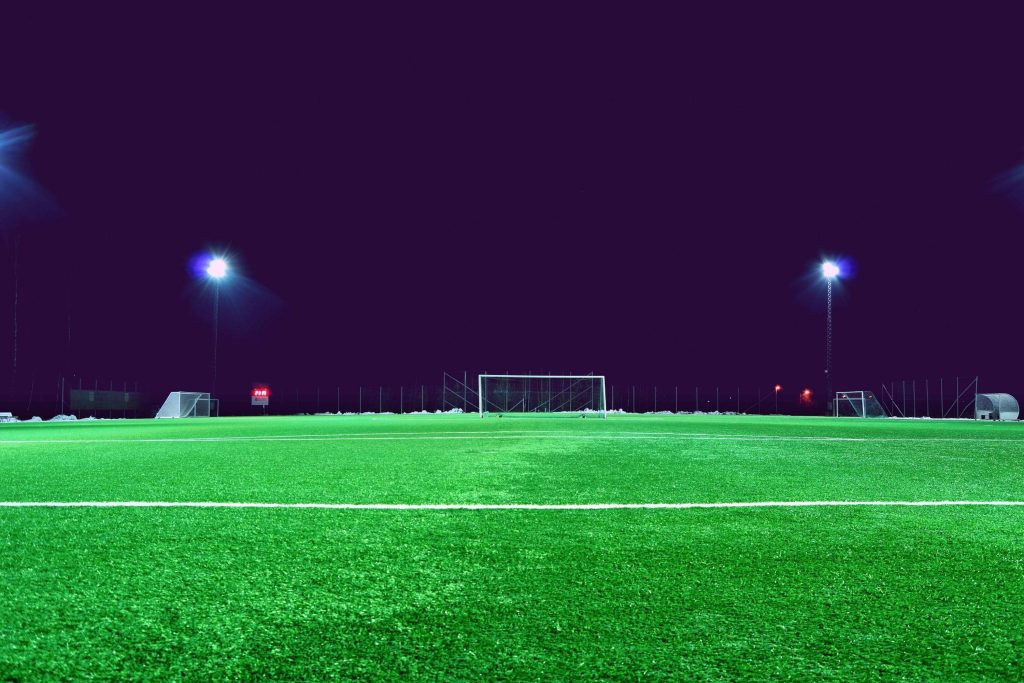
Dynamic Lighting: Incorporate adjustable flood lights that allow you to customize lighting levels for different sports or events, adapting to the specific needs of the moment.
Spectator Experience: Enhance the spectator experience by using flood lights to light up seating areas and walkways, ensuring safety and comfort during nighttime matches.
Conclusions
Landscape flood lighting is more than just a method of lighting; it’s an artistic expression that evokes emotions and creates enchanting scenes. By strategically placing fixtures and manipulating light, designers can sculpt outdoor spaces into magical realms that captivate the eye and elevate the overall ambiance. The ability to create a delicate balance between beauty and functionality is at the core of exterior flood lighting. While the primary purpose is to provide lighting for safety and visibility, skilled designers infuse their creations with an artistic touch that transforms simple lighting into a remarkable experience.
Behind the magnificent sights of landscape flood lighting lies the science that dictates the placement, angles, and types of lamps to achieve desired effects. Proper techniques guarantee that the right areas are lit, glare diminishes, and shadows are cast correctly for a more immersive experience. The selection of appropriate fixtures is an important aspect of outdoor flood lighting. LED flood lights are a popular choice due to their low energy consumption, long lifespan, and versatility. They generate focused beams that allow precise lighting effects while consuming little energy. Glare can detract from the appealing look of outside flood lighting by causing discomfort and obstructing visibility. Designers mitigate this by installing glare shields on fixtures, carefully arranging lights, and applying diffusers to provide soft and pleasant lighting.
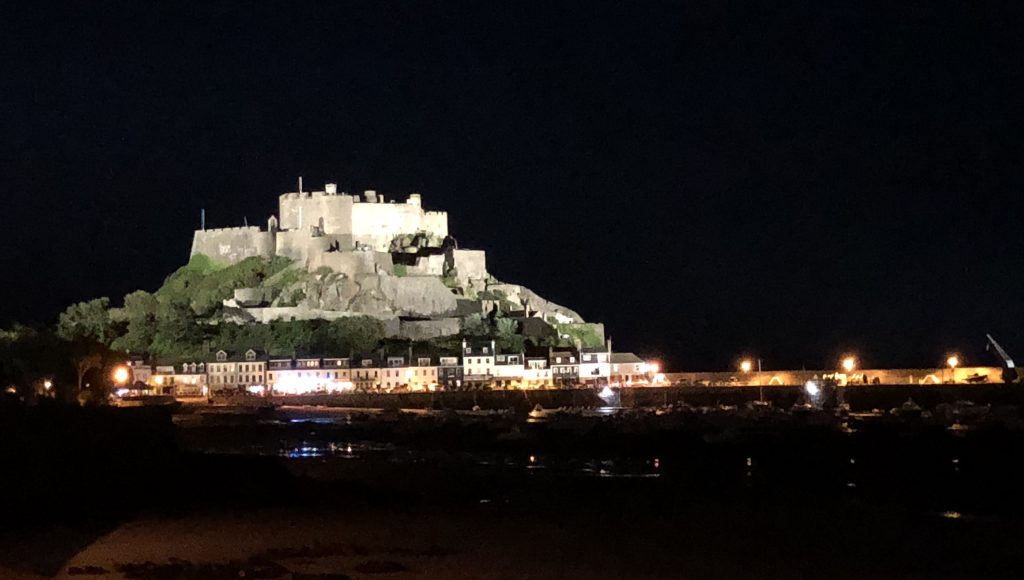
In conclusion, landscape flood lighting is a work of art that combines imagination, artistry, and technological expertise. The interaction of light and darkness generates scenes that elicit awe, emotion, and inspiration. Floodlighting transforms outdoor spaces into beautiful panoramas that captivate the senses, from highlighting architectural treasures to enhancing the beauty of nature. Outdoor flood lighting remains an ever-evolving tribute to the harmony of creativity and innovation, guaranteeing that the night is forever lighted with the wonder of artful design as engineers and technology push boundaries.
FAQs (Frequently Asked Questions) about Landscape Flood Lighting
Q1.What is the best outdoor flood light?
Whether you choose LED flood lights for their efficiency and versatility or opt for halogen lighting solutions with natural color rendering, the key is to find a balance between performance, energy efficiency, and design.
Q2.Can I install landscape flood lighting myself?
While they can be installed by yourself, it is best to consult a professional for proper placement and wiring.
Q3.Can landscape flood lighting improve home security?
Absolutely, flood lights with motion sensors can deter intruders by illuminating unexpected movements, making your property less appealing to potential threats.
Q4.Is landscape flood lighting suitable for small gardens?
Landscape flood lighting works great for small gardens, and its transformational powers may bring out the hidden beauty of even the most modest outdoor locations. Floodlighting adjusts easily to the scale of your garden, from providing an intimate mood to boosting safety and accentuating the features that make your garden unique.
Q5.Can landscape flood lighting increase the value of my property?
Landscape flood lighting doesn’t simply light your property; it enhances its potential, beauty, and the possibilities it offers. By increasing visual appeal, extending living spaces, improving security, emphasizing architecture, and fostering emotional connections, flood lighting contributes to the multifaceted perception of your property’s worth. As you invest in the art of lighting, you’re investing in the prosperity of your property’s value – a radiance that continues to shine for both current enjoyment and future potential.
Q6.How do I maintain my landscape flood lighting system?
Maintaining your landscape flood lighting system is a simple but vital task that ensures its beauty and functionality. Follow these best practices to make sure that your outdoor space is beautifully lit all year long: frequent cleaning and inspection, timely bulb replacement, inspecting wiring and connections, trimming vegetation, and fixture realignment.
Q7.What color of light is best for landscape flood lighting?
Selecting the best color of light for your landscape flood lighting is a creative endeavor that allows you to paint your outdoor space with a palette of illumination. Whether you opt for the warm embrace of warm white light (2700K to 3000K), the balanced brilliance of neutral white light (3500K to 4000K), or the contemporary vibrancy of cool white light (4000K to 5000K), your choice will influence the ambiance and perception of your landscape.
Q8.Are solar-powered lights effective for landscape flood lighting?
Yes, solar-powered flood lights store energy during the day and typically provide consistent lighting throughout the night.
Q9.Should landscape flood lights be taken down in winter?
The decision of whether to keep or remove landscape flood lights during winter hinges on a delicate balance between safety, aesthetics, convenience, and maintenance. Prioritize the protection and functionality of your lighting system by considering the local weather conditions, the quality of your fixtures, and your outdoor activities during the colder months. Whether your landscape flood lights remain as beacons of light or find temporary refuge, the key lies in preparedness and thoughtful consideration of the unique factors that shape your outdoor lighting strategy.
